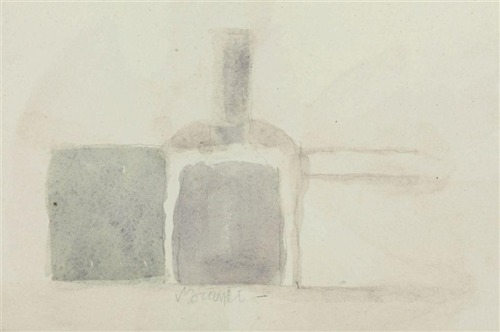+ JMJ +

Italian Painter, Giorgio Morandi, 1961
Photo taken by Federico Garolla in Grizzana, Italy
Photo taken by Federico Garolla in Grizzana, Italy

GIORGIO MORANDI (1890-1964)
'Natura Morta (Still Life)', 1956 (oil on canvas)
Giorgio Morandi is one of those painters who, at first glance, seem to defy categorisation. He was nicknamed ‘il monaco’ (the monk) due to his reclusive lifestyle. Morandi spent most of his life in his native town of Bologna, both living and painting in his flat, and seldom venturing far afield. This gave rise to his initial reputation as a provincial artist, but the obvious quality of his paintings gradually forced a reappraisal of his work and established him as one of the best modern Italian painters and the greatest master of Natura Morta (still life) in the 20th century.
Although Morandi does not fit comfortably into to the canon of movements in modern art, his paintings are stylistically embedded in the Italian tradition. Initially influenced by the metaphysical painting of his countrymen, Giorgio de Chirico and Carlo Carrà, his work was also deeply rooted in the art of the Early Italian Renaissance, particularly Giotto, Uccello and Piero della Francesca.
Morandi's Still Life Objects

Morandi Still Life (1955) and Italian Medieval Town, San Gimignano
Morandi deliberately limited his choice of still life objects to the unremarkable bottles, boxes, jars, jugs and vases that were commonly found in his everyday domestic environment. He would then 'depersonalize' these objects by removing their labels and painting them with a flat matt color to eliminate any lettering or reflections. In this condition they provided him with an anonymous cast of ready-made forms that he could arrange and rearrange to explore their abstract qualities and relationships.
Morandi's compositions and choice of still lifes objects allude to his Italian heritage. When assembled together in a still life group, his dusty bottles and boxes take on an monumental quality that evokes the architecture of medieval Italy - a style with which he seems at ease. Morandi's own city of Bologna has many examples of medieval architecture and is home to the oldest functioning university in the world: the "Alma Mater Studiorum", founded in 1088.
The Theatre of Visual Relationships

FRANCISCO DE ZURBARÁN (1598-1664)
'Still Life with Pottery Jars', 1630's (oil on canvas)
Still life as the theatre of visual relationships had its roots in some of the earliest examples of the genre. Francisco de Zurbarán's 17th century masterpiece, 'Still Life with Pottery Jars' parades four prima donnas, each competing with the other for the attention of their audience. Morandi's characters, however, are the opposite of these: a humble but disciplined chorus singing in perfect harmony.
Morandi' s Intensity of Observation

GIORGIO MORANDI (1890-1964)
'Natura Morta (Still Life)', 1929 (oil on canvas)
In the hands of a lesser artist, Morandi's restricted choice of subject matter could give rise to a series of boring repetitive images. What elevates his work to a higher plane is the remarkable intensity of his observation.
Today, we were bombarded with images from print and multimedia and are accustomed to absorbing them at breakneck speed. To slow down and focus on one image for a length of time is against our conditioning, but this is precisely what Morandi does in his painting and what he expects from his audience.
Like Chardin, the greatest still life painter of the 18th century, Morandi always looked at his still life objects as if he was seeing them for the first time. He slowly contemplated each object, profoundly searching for its visual dynamic within the still life group. When satisfied with an arrangement, he would draw around the bases of the objects to finalise their positions. "It takes me weeks to make up my mind which group of bottles will go well with a particular colored tablecloth......Then it takes me weeks of thinking about the bottles themselves, and yet often I still go wrong with the spaces. Perhaps I work too fast?" It is this intensity of contemplation and observation that gives a freshness and individuality to each of Morandi's paintings, even if the same objects are used repeatedly in different works.
Morandi's Quality of Light

GIORGIO MORANDI (1890-1964)
'Still Life with Cups and Boxes', 1951 (oil on canvas)
'I am essentially a painter of the kind of still life composition that communicates a sense of tranquility and privacy, moods which I have always valued above all else'. Morandi's carefully balanced colours and tones always convey a peaceful mood. Some paintings are bright and sunlit, whereas others are subdued with a less obvious light source. However, each of his pictures has a certain quality of light that suggests it was painted at a particular time of day or under specific lighting conditions. This distinctive use of light and his continuous exploration of similar images insinuates the influence of Monet's serial paintings of 'Haystacks' and 'Rouen Cathedral'.

GIORGIO MORANDI (1890-1964)
'Natura Morta (Still Life)', 1960 (oil on canvas)
If, as Marcel Proust puts it, Chardin's still lifes were summoned “out of the everlasting darkness in which they have been interred”, then Morandi's still lifes slowly emerge from the light that sculpts their form. Given Morandi's slow contemplation of the elements of his art and the fact that he had to cope with the transient effects of light, it is clear that his pictures were developed over a long period of time. This helps to explain the uncertainty of the outlines of his forms, as he grafts the subtleties of one day's observations on top of the next. These wavering images also recall the work of Paul Cézanne who had a similarly patient approach to painting.
The unique style of Giorgio Morandi's work may be difficult to place within the movements of modern art, but it is so steeped in influences from Giotto in the 13th century to metaphysical art in the 20th, that it acquires an ageless quality - a characteristic that identifies most great art.
Giorgio Morandi Notes

GIORGIO MORANDI (1890-1964)
'Self Portrait', 1925 (oil on canvas)
- Giorgio Morandi was nicknamed 'il monaco' (the monk) due to his reclusive lifestyle.
- Morandi is the greatest Italian still life painter in the 20th century.
- Still life painting is called 'Natura Morta' in Italy.
- Morandi's still lifes have many influences spanning seven centuries from the early Renaissance to the 20th century.
- Morandi's still life arrangements have a monumental quality.
- Morandi contemplates his still lifes for a long time before he paints them.
- Morandi tries to communicate a sense of tranquility in his art.
- You have to slow down to look at and appreciate the beauty of one of Morandi's paintings.
(This art appreciation lesson was taken from Arty Factory.)










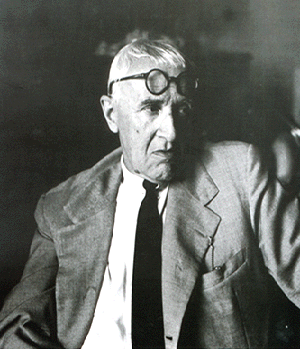




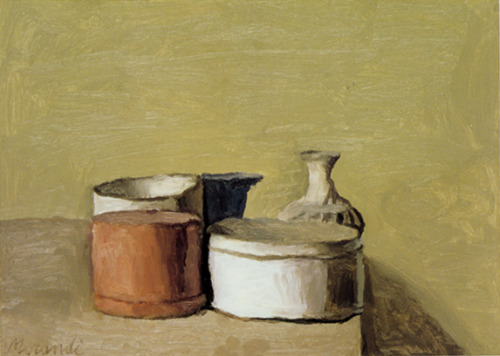














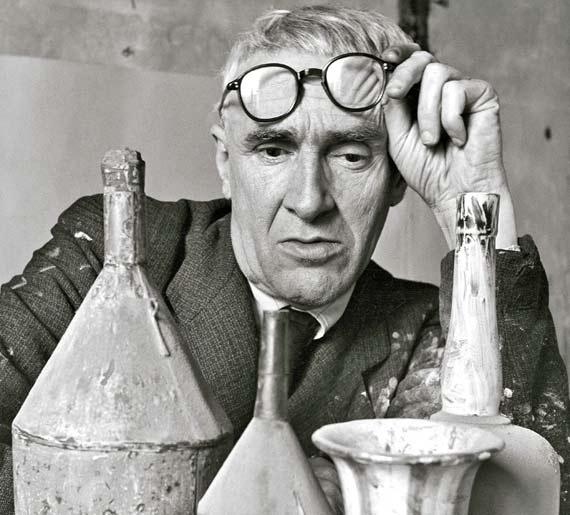

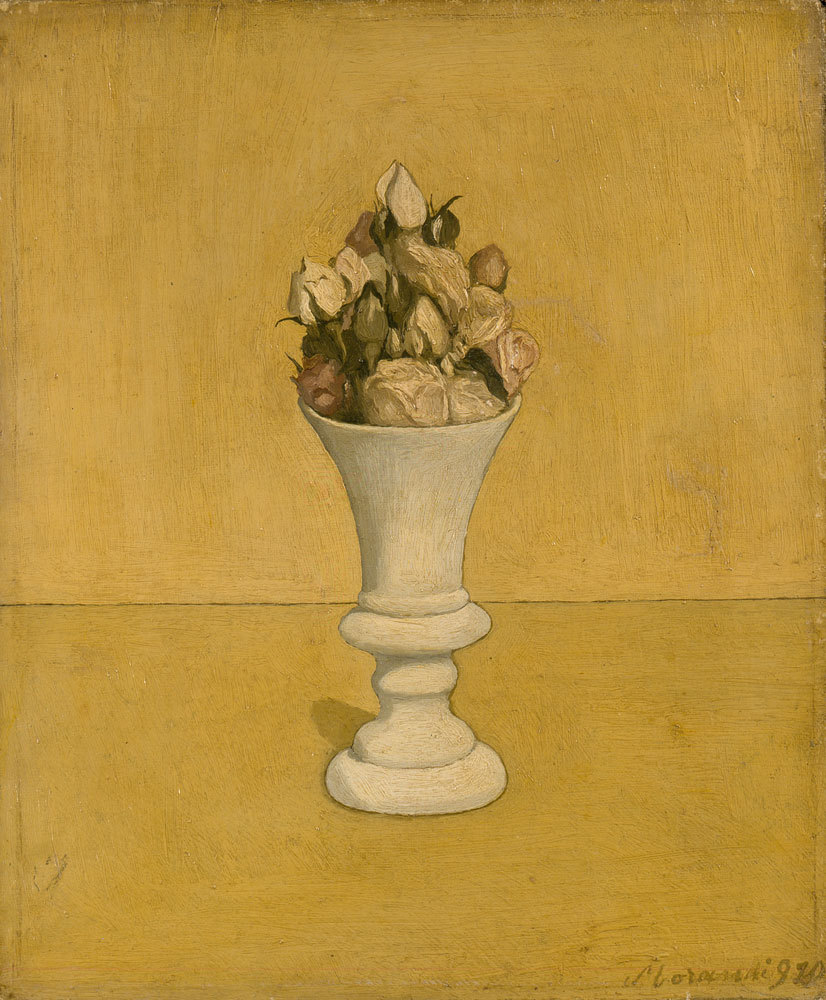
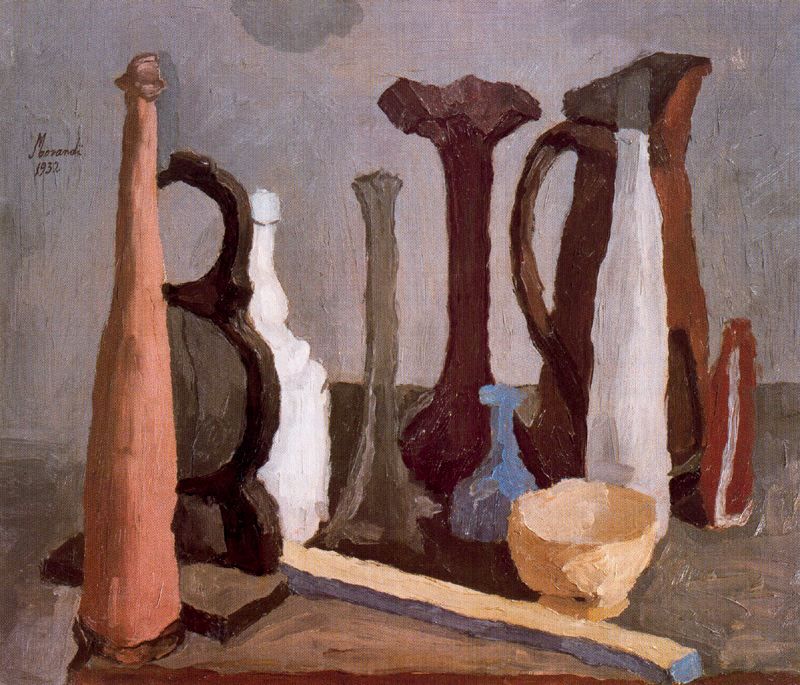

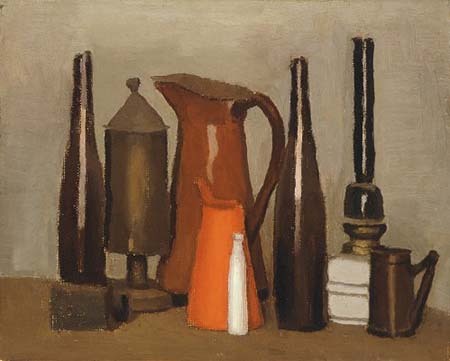

























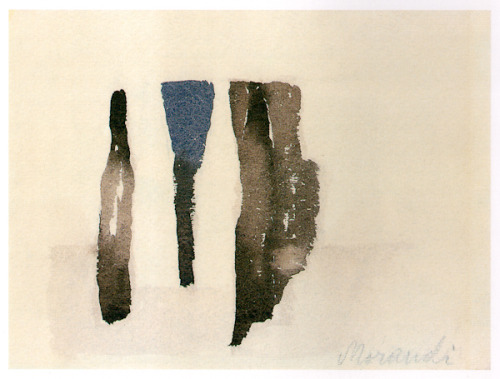


![Natura Morta [Still Life]](http://www.nationalgalleries.org/media/38/collection/GMA%20906.jpg)


